That is the latest achievement of the Italian Institute of Technology (IIT) with iRonCub3 - the world's first humanoid robot capable of flying with a jet turbine. The product marks a turning point in the research of multi-terrain moving robots, especially in the context of rescue missions and disaster response increasingly requiring support from advanced technology.
The iRonCub3 is equipped with four jet engines, including two in the arms and two on the back, which can generate a thrust of more than 1,000 newtons, enough to lift the 70 kg robot body off the ground. The titanium spine and heat-resistant shell protect the robot from exhaust gases up to 800°C, ensuring safety during operation.
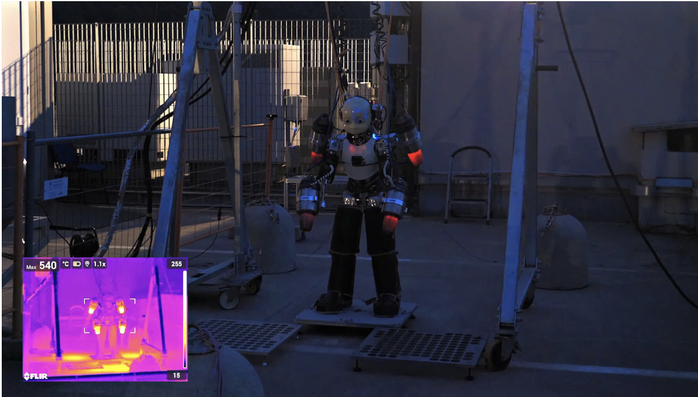
iRonCub3 - the first humanoid robot to fly on a jet successfully took off. Photo: Youtube Artificial and Mechanical Intelligence
Unlike drones that are symmetrical and stable, robots with humanoid shapes and flexible limbs cause aerodynamic fluctuations and constantly change their center of gravity. To address this challenge, the IIT team – in collaboration with the Polytechnic Institute of Milan and Stanford University – developed an AI-based flight control system that uses neural networks trained on simulation and real-world data. This allows the iRonCub3 to adjust its flight attitude, cope with turbulent airflow, and sequentially fire its jets during takeoff.
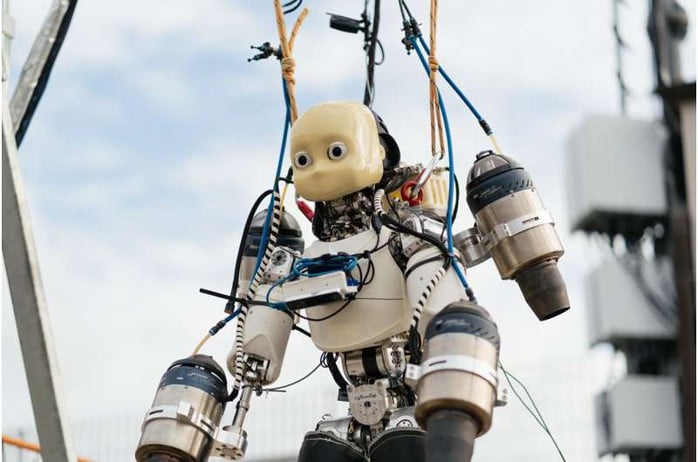
iRonCub3 integrates 4 jet engines, including 2 engines mounted on the arms and 2 engines on the back. Photo: IIT
The development of this robot also applied the "co-design" method, while optimizing the body shape and engine mounting position to achieve the highest flight performance. A series of simulation tests, thermal control, thrust sensors and take-off and landing algorithms were carefully refined.
According to Daniele Pucci, Head of the Mechanical and Artificial Intelligence Laboratory (AMI Lab) at IIT, the design of the robot is aimed at expanding its capabilities in harsher and more unpredictable environments. The iRonCub can be used in disaster relief missions, hazardous environment surveys, and autonomous navigation in enclosed spaces with complex structures.
It is expected that in the near future, iRonCub3 will continue to be tested outdoors at Genoa airport, preparing for further steps in integrating flying robot technology into real life.
Source: https://nld.com.vn/robot-hinh-nguoi-biet-bay-dau-tien-tren-the-gioi-196250621224223724.htm








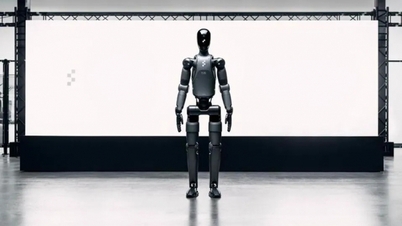

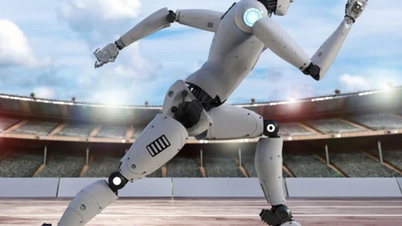

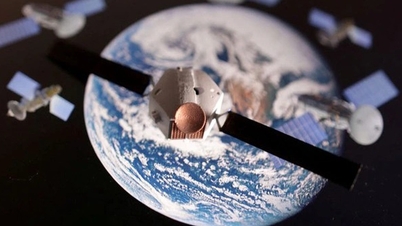




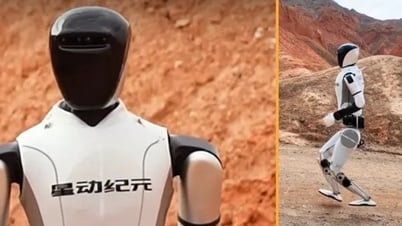





![[e-Magazine] Reporters must know how to create multi-platform products](https://vphoto.vietnam.vn/thumb/402x226/vietnam/resource/IMAGE/2025/6/21/7e3f0e4d62434cffb490109bf838e069)

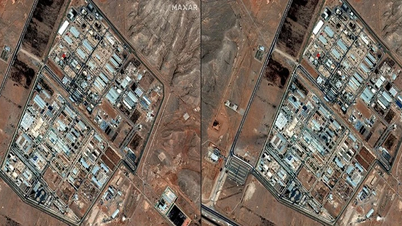











![[Photo] Central Propaganda and Mass Mobilization Department meets with exemplary journalists](https://vphoto.vietnam.vn/thumb/1200x675/vietnam/resource/IMAGE/2025/6/21/9509840458074c03a5831541450d39f8)























![[Maritime News] Wan Hai Lines invests $150 million to buy 48,000 containers](https://vphoto.vietnam.vn/thumb/402x226/vietnam/resource/IMAGE/2025/6/20/c945a62aff624b4bb5c25e67e9bcc1cb)



















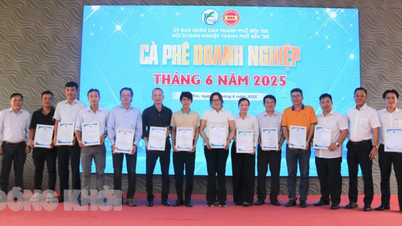






















Comment (0)